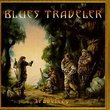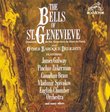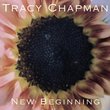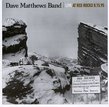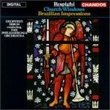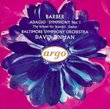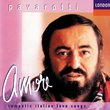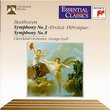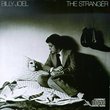| All Artists: Maurice Ravel, Michael Tilson Thomas, Eugene Ormandy, Lorin Maazel, Pierre Boulez, Zubin Mehta, Andrew Litton, Carlo Maria Giulini Title: Ravel: Greatest Hits Members Wishing: 0 Total Copies: 0 Label: Sony Original Release Date: 1/1/1994 Re-Release Date: 8/9/1994 Genres: Pop, Classical Styles: Vocal Pop, Historical Periods, Modern, 20th, & 21st Century, Symphonies Number of Discs: 1 SwapaCD Credits: 1 UPC: 074646406724 |
Search - Maurice Ravel, Michael Tilson Thomas, Eugene Ormandy :: Ravel: Greatest Hits
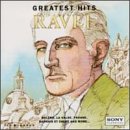 | Maurice Ravel, Michael Tilson Thomas, Eugene Ormandy Ravel: Greatest Hits Genres: Pop, Classical
|
Larger Image |
CD DetailsSimilarly Requested CDs
|
CD ReviewsRavels Greatest hits Sound man | 07/20/2007 (5 out of 5 stars) "Listen to the genuis of Ravel on a clean sounding recording that you can enjoy time and time again without deterioration.Be advised the recording levels are not dampened so dinner guests and headset wearers will certainly be awokened especially at the end of Bolero.If you listen closely the music pages can be heard turning ,nice sense of being there ,get the cd they dont make em like this anymore." Bolero aside, sheer perfection G. Stewart | Chesapeake, VA USA | 11/18/2007 (5 out of 5 stars) "I do not like Bolero. I have never liked Bolero. I don't think I will ever enjoy Bolero. I say this only to offer a reason for my lack of mention of that piece (beyond this, obviously). In fairness, Ravel at least once described Bolero as trivial, "a piece for orchestra without music". Fortunately, I did not let my feelings for Bolero sour my appreciation for the remaining works of Ravel. Ravel was the master of transcriptions; reworking most of his works from piano to orchestra or vice-versa, which basically means that his output was virtually doubled because he wrote the majority of his pieces for orchestra and solo piano. He was a master of the French Impressionist era and an innovator in the move to modern 20th century classical composition. Ravel's catalogue of work is astounding and his influence on composers that followed him, astounding. He began playing the piano a little later in life than some of the well known composers who were "prodigies" and playing before they could write. Ravel began playing the piano when he was 7 and, with his ability apparent, ended up at the Conservatoire de Paris where his art would be refined. While at the Conservatoire, he composed [track 2] Pavane pour une infante defunte (Pavane for a dead Princess), a pavane being a processional dance played slowly. This piece was composed when Ravel studied under another of France's greatest composers, Gabriel Faure. The piece was written for piano as a tribute of sorts to the customs and rhythms of the Spanish, whom Ravel (along with other French greats) respected greatly. The piece is staggeringly beautiful and is, perhaps, my favorite by him. The version offered here is the orchestrated transcription by Ravel as published by Ravel 11 years after his original piano piece was composed. Alborada del gracioso (The Comedian's Aubade) is, like Pavane, heavily influenced by Ravel's appreciation for the Spanish musical form. The gentle pluck of the strings at the opening of the piece is reminiscent of Spanish guitar and gently gives way to woods and brass that are light and airy, until there is a sudden flourish of woods, brass and percussion that is exhilarating. The piece is lovely and is, again, provided in the orchestrated version, rather than the original form as composed for piano as a piece of the work of 5 movements for piano called "Mirroirs" or Mirrors. Rhapsodie Espagnol (get the feeling that Ravel loved the Spanish? Ravel's mother was Basque, Spanish, and heavily influenced the Frenchmen's work) was one of Ravel's first major works for orchestra. As with most of his works, this piece was written for piano; two actually, for four hands; but was transcribed for orchestra before its first performance. It consists of 4 short movements and the work as a whole is sweeping in its ability to move so gracefully from the somber to the uplifting. Rigaudon comes from what began, again, as a work for Piano. In its original composition, Le Tombeau de Couperin was a suite for solo piano in six movements. Years later, Ravel would transcribe the work in to 4 movements for orchestra, this being the final movement. The orchestrated version of the suite is far more popular now and sees heavy rotation in the repertoires of Symphonies throughout the world. The sweeping movement is a dance that harkens back to the Baroque dance suites of old whilst still providing Ravel's signature innovative harmonies that relied on classical structures that were traditional, allowing him to mask his creativity. La Valse (or La Valse, un poeme choreographique) is a tribute to the history, the rise, the pinnacle, and the fall of the waltz. Although truncated throughout with punctuated and harsh chords from the entire orchestra which, ironically, make it very difficult to be viewed as a waltz at all; though it is still particularly appealing in that it was bombastic in a way that Ravel rarely was. Interestingly, the piece was transcribed by Ravel for piano, but the orchestrated version remains the popular piece for performance. Piece in the form of a Habanera is, again, a tribute to the music of Spain, a habanera being a rhythm like the tango. This is a short piece that focuses on strings and woods. It is haunting, airy and light with a feel of open space where there could be more music, but is not. It is minimal in a marvelous way. The Mother Goose Suite was 5 pieces composed for piano duet for close friends. As the title implies, the pieces were written as tone poems to the tales of Ma Mere l'Oye. The Fairy Garden was the 5th piece from this suite. Ravel, as with most of his work, transcribed the piece for orchestra and created, in this piece 4 minutes of orchestral magic. It is a joy to hear. Lever du Jour (daybreak); what a great title. This piece evokes the mental picture of a sunrise, birds and wildlife rising to a new day. This is a wonder. I don't know what else to say to describe it. The piece was composed for the ballet Daphnes et Chloe; the first piece from the second suite in a 3 suite ballet. Pantomime, again from Daphnes et Chloe, again from the second suite, this being the 2nd piece, is much in keeping with the feel and theme of daybreak before it. It is a beautiful piece which evokes many possible pictures, but more importantly, showcases Ravel's gift for composition as the piece is widely regarded as one of his best. General Dance closes the disc (the 3rd and final movement from the second suite of Daphnes et Chloe). It is much more animated in its use of the orchestra and the play between the instruments is both uplifting and disconcerting because it translates a feel of general uneasiness and, again, tends to border on a slight bombast, even adding a chorus toward the end of the piece. The entire CD is performed, recorded and mixed beautifully. I have no complaints about this CD (except for the inclusion of Bolero, which I have attempted to justify above). Buy this disc with confidence. Unless you are looking for the piano works. This disc does not contain the piano works of Ravel; which I do highly recommend anyone out there reading this should definitely hear as well. Enjoy!" Good for what it is Adam Baker | Tucson, AZ | 09/14/2008 (5 out of 5 stars) "Since this is a selection of works played by various orchestras, it's not really a comprehensive piece of work. But really, Ravel is not one of the "great" composers. Bolero is a fun piece and I enjoy it. For the rest, but for the dates of composition I would swear it was a movie soundtrack."
|

 Track Listings (11) - Disc #1
Track Listings (11) - Disc #1
